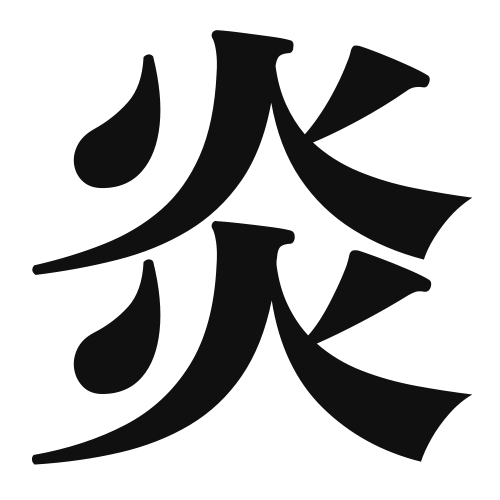1. Overview of Meaning
The kanji “炎” (en) means “flame” or “blaze.” It represents the concept of fire, particularly in its more intense and uncontrolled forms, such as flames that rise and flicker.
2. Formation and Radical
Formation of the Kanji: The kanji “炎” is a compound character that combines elements to convey its meaning. It is formed from the radical for fire (火) and represents the idea of flames or intense heat.
Radical: The radical of “炎” is 火 (hi), which means “fire.” This radical is commonly found in other kanji related to heat and flames.
3. Examples of Usage
Common Words and Phrases: Some frequently used words that include “炎” are:
- 炎上 (enjou) – “flame-up” or “to catch fire”
- 炎症 (enshou) – “inflammation”
Example Sentences in Daily Conversation:
- キャンプファイヤーの炎がとても美しいです。
(The flames of the campfire are very beautiful.) - 彼は炎上した車を見ました。
(He saw the car that was on fire.)
4. Synonyms and Antonyms
Similar Kanji: A similar kanji is “火” (hi), which also means “fire” but is more general and can refer to fire in any form, not just flames.
Antonyms: A kanji with an opposite meaning is “水” (mizu), which means “water.” While “炎” represents heat and fire, “水” represents coolness and fluidity.
5. Cultural and Historical Background
Connection to Japanese Culture: In Japanese culture, fire has both positive and negative connotations. It is often associated with warmth, light, and purification, but also with destruction and danger.
Proverbs and Idioms: One common idiom is “炎のように燃える” (honō no yō ni moeru), which means “to burn like a flame,” often used to describe passionate feelings or intense emotions.
